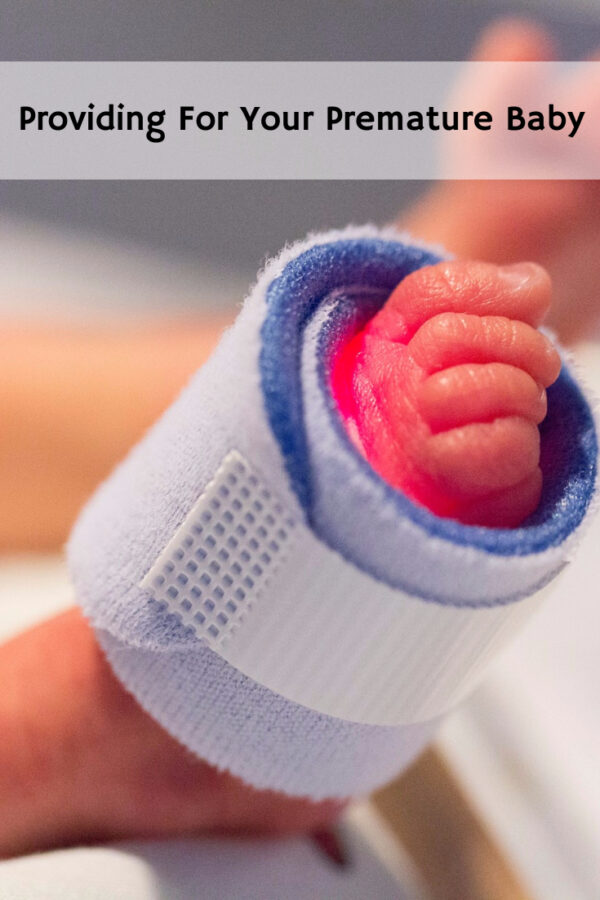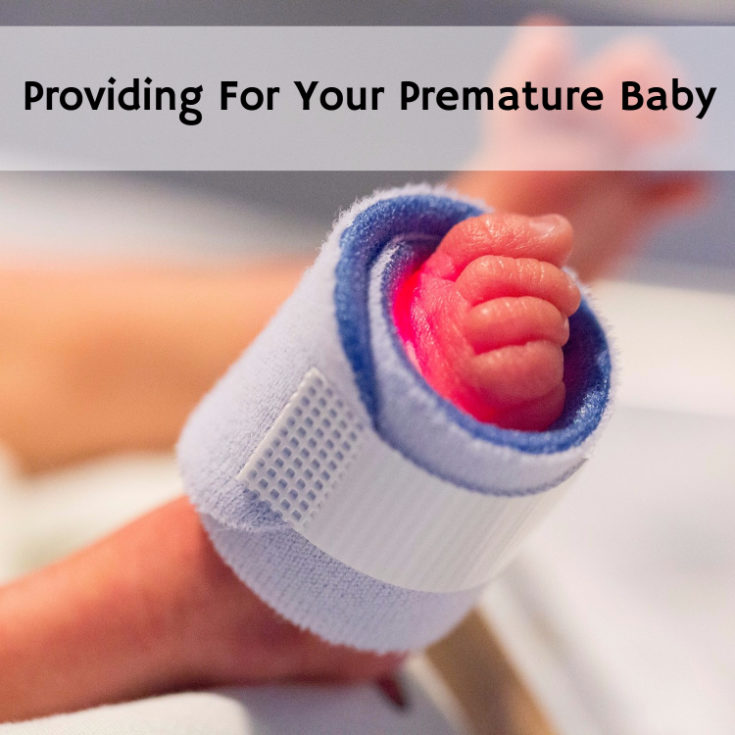Disclosure: This post may contain affiliate links, meaning we get a commission if you decide to make a purchase through our links, at no cost to you. Please read our disclosure for more info.
The medical community has made amazing advances in the last several decades in caring for premature babies. Many young adults today are living healthy and happy lives thanks to these advances. Despite these medical successes, premature babies continue to require special treatment while in the hospital as well as when they are brought home. Here are tips to provide for your premature baby.
In This Post:
In the Hospital
Help with Breathing
While the premature baby’s external appearance clearly shows his underdevelopment, vital internal organs are also affected. Most premature babies have problems in breathing. Their neurological systems are not fully programmed. Breathing is not yet automatic, and sometimes simply stops. For this reason, premature babies are placed in isolation in ventilators, helping them to breathe until their lungs and neurological systems development can enable them to breathe successfully on their own. Some premature babies require many weeks in a ventilator until their bodies are capable of breathing reliably.
Bonding through Speech
Newborns bond with their parents or other loving caregivers through intimate contact such as soft speech and gentle touching. Touching is difficult, and in some cases severely restricted, when the baby is in a ventilator. Voice, however, can reach through this barrier. It takes little time for a baby to recognize and be comforted by a parent’s or nurse’s voice. Whenever parents speak softly to the baby, the comforting sounds give the baby a feeling of safety and security.
Bonding through Touch
When the baby’s development reaches a point where the doctors feel that parents can safely touch the child while he is in the ventilator, they should do so with considered caution. The premature child is frail and can’t be handled of lifted, but it can be caressed. The initial tendency is to lightly touch the child with a finger. This may feel more like an irritation than a touch. Make your touch firm but gentle. Placing your finger into the child’s hand will prompt the baby to clutch the finger applying a comfortable natural pressure.
Transition from Ventilator to Parent
It may seem like forever to the parents, but eventually, the baby’s development will reach a point where he would have been had the birth been closer to full term. It will then be possible, with medical supervision, to actually pick up and hold the baby as you have been longing to do. The nurse may ask you to actually wash and change the baby. Now your mutual bonding can begin in earnest. Soon you’ll all be heading home.
The Trip Home
Maintaining Temperature
When it’s finally time to take your new baby home, dress the baby in clothing that is appropriate for the weather and temperature. If it’s hot out, dress the baby to allow comforting air flow. If it’s cold, make sure that the baby is bundled up warmly and that his face is protected for chilling winds. If you’re traveling home in a taxi or family car, don’t forget about the change in temperature in the vehicle. If the baby is bundled up against the cold, he’ll be pretty uncomfortable in a heated automobile. Be prepared to remove blankets or clothing as necessary. The opposite condition is equally troublesome. A baby that is dressed for hot weather will be uncomfortable chilled in an air conditioned vehicle. Bring a blanket, just in case.
Supporting Baby’s Head
When premature babies are ready to leave the hospital, they may be as healthy as a baby born at full term, but they will most probably be smaller and not physically strong. It is likely that the baby will be too small for a standard infant car seat, and his head will most likely require extra support or padding in the rear facing car seat. Make sure the driver proceeds slowly with limited bumps in the road, as he brings the valuable cargo home.
Early Life at Home
Clothing the Premature Baby
It will take the premature child several months longer that the full term child to fit into most off-the-shelf baby clothes. You may need to buy clothing that is especially made for premature babies. Special preemie diapers may be needed as well.
Breast Feeding
If you have decided to breast feed your baby, a healthful choice, you may need to buy some nipple shields. Premature babies often have trouble sucking on the mother’s nipples. Silicone nipple shields are shaped to enable the baby to better suckle at feeding time.
Ongoing Medical Support
Once your premature baby is safely in your home, routine visits to the pediatrician are all that is usually necessary. In some cases, however, the baby may require additional medical supervision and special nutritional requirements. In either case, your baby would not have been released from the hospital if there was any critical problem. With your loving care and routine medical supervision, you’ll soon look back at the premature experience as a simple milestone for you beautiful healthy child.




